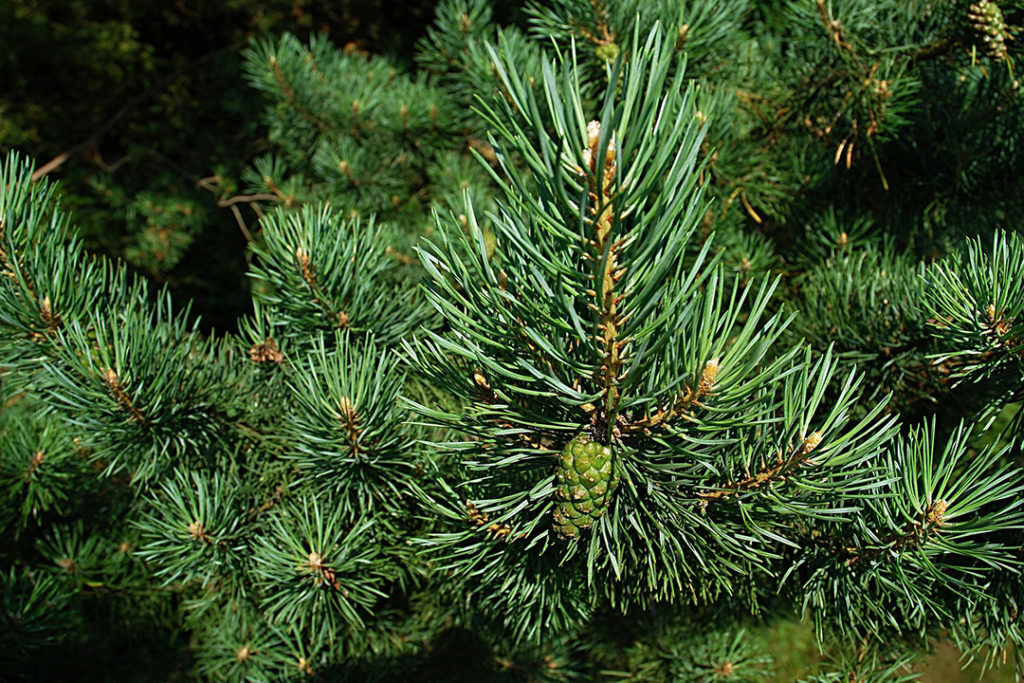
Canada
Fir
Abies

General Description / Cultural Significance
It is said that the distinctive smell of fir, or Abies, covers the country. They are one of the country’s most common trees and grow in all ten provinces and three territories of Canada. The refreshing evergreen scent is beloved by Canadians and is largely associated with happy memories—especially the Balsam fir with its rich fragrant resin. The scent of fir is as well-known as the conical silhouette of the trees seen from a distance in the landscape. Terpenes are abundant in the fir’s resin and also released into the atmosphere on hot summer days. Scientists have found that this plays a role in creating cloud cover, which cools the forest. Terpenes are used in fragrances and cleaning products because of their antiseptic quality and in medicines including anticancer drugs. They are a staple of the forest, providing shelter and protection from the cold, and providing seeds, bark, needles, and twigs for nutrition and nest-building.
The resin of the fir trees was traditionally used by aboriginal people as an incense, prominent in its use for scenting sweat lodges. The tree’s resin, or pitch, was used to seal canoes and was chewed not only as a source of food but as medicine, as the gum has antiseptic properties. The tree continues to have broad medical use for a range of health issues. Today the essential oil from the needles is used in medicine and perfume. Pine needles or the oil can be made into teas for colds and fevers, and poultices for chest colds. It is made into a salve for cuts and burns. The needles are still used as a moth repellant. Today fir trees are still widely used as Christmas trees.
Climate Change/Conservation Status
Canada is a large and geographically diverse country and climate change is affecting it in many ways, starting with changes in its climate and weather. Average temperatures in Canada are increasing, including warming at high latitudes which does not portend well for fir trees. However, the IUCN and other conservation groups do not warn about threats to firs except for Pacific Silver Fir, Abies amabilis, and Grand fir, Abies grandis, both of which have been threatened in the past by unsustainable logging. However, devastatingly destructive wildfires continue to take their toll on fir trees.
Alternate Names
Balsam Fir
Grand Fir
Pacific Silver Fir
Sources
Climate Reality Project, 2018. How is Climate Change Affecting Canada? The Climate Reality Project. [website]
D’Orangeville, L., et. al., 2018. Beneficial effects of climate warming on boreal tree growth may be transitory. Nature Communications, [website] 9(1), 3213. DOI:10.1038/s41467-018-05705-4
Permanent Mission of Canada to the United Nations. This statement can be found on the World Sensorium original website.
Toromani, E., Sanxhaku, M., & Pasho, E., 2011. Growth responses to climate and drought in silver fir (Abies alba) along an altitudinal gradient in southern Kosovo. Canadian Journal of Forest Research, [website] 41(9), pp.1795-1807. DOI: 10.1139/x11-096

